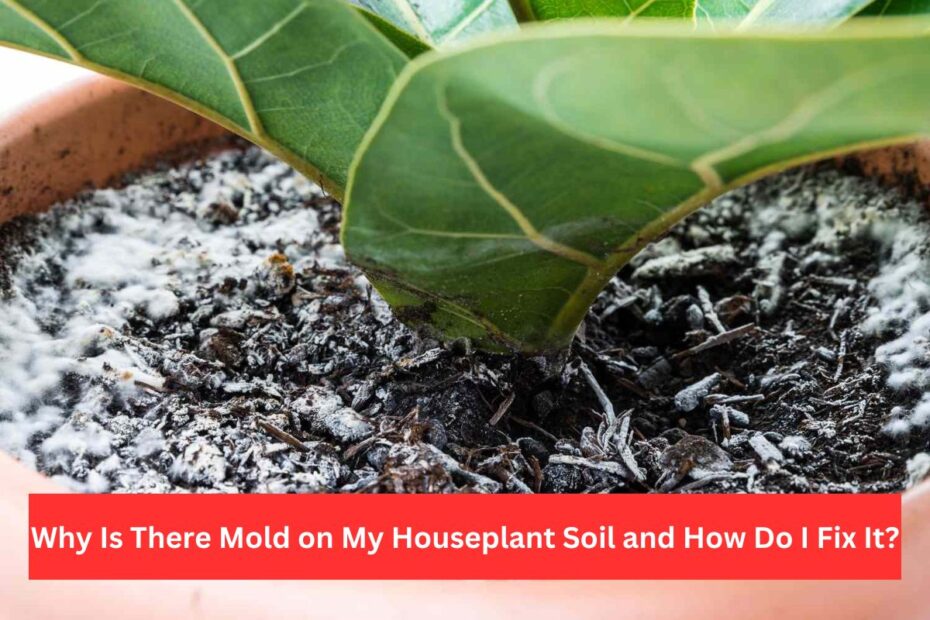Does the dirt around your houseplant smell like mold? Don’t stress out; there’s no need to. Mold on houseplant soil is generally harmless and easy to fix, even though it may look bad. What should you do if you see mold growing on your favorite houseplants? Know this.
What Mold on Soil Looks Like
Every once in a while, you might see mold growing on your dirt. Most of the time, it shows up on the soil’s surface as small to large areas of fuzzy white mold. Soil that is moldy is almost always soil that is wet or moist.
Why Houseplant Soil Gets Moldy
In reality, mold spores are a normal and healthy part of dirt inside and outside, and they are usually not dangerous. But in the right conditions, these mold spores can turn into fungi, which are the white mold you see on top of the soil.
Over time, these fungi may start to fight with your plant for food. Also, it’s not pretty to look at. Because of this, what makes mold grow? Keep an eye out for these things.
Overwatering
If you water your plant too much, mold will grow quickly. Because you are consistently giving your plant more water than it needs, the wet soil will be a great place for the dormant mold spores to grow.
To keep your plant from getting too much water, find out how much it needs and change how often you water it depending on the season.
Keep in mind that most plants don’t need as much water in the fall and winter because they aren’t growing. It’s also easy to give your plants too much water during these times.
Poor Drainage
It is very important for flowers and all container plants to have good drainage. If you leave the roots of most houseplants in water for too long, they will die, and mold spores love it when dirt is too wet.
Soil amendments like perlite and sand can help with drainage by letting more air into the soil and making sure the plant’s pot has drainage holes that let water drain out.
Contaminated Soil
Even though all potting soil has some bacteria in it, mold problems could start with a bag of soil that is dirty. If you don’t properly store soil that has been wet, it can get contaminated, which can cause too much mold growth later on.
Is Moldy Soil Bad for Houseplants?
Most of the time, moldy dirt is nothing to worry about. Mold means that there are a lot of living things in the dirt around your plant. But too much mold might eventually make it hard for your plant to get the nutrients it needs from the dirt, which could slow its growth.
Real issue with mold on houseplant dirt is that it usually means your plant is growing in too wet of a place, which can lead to more serious problems like root rot. If you see mold on your plant, it means that something needs to be changed in its growing surroundings.
How to Get Rid of Moldy Soil
It’s not too hard to fix moldy soil, and you can try a few different approaches. It might be best to change all the soil in your plant with a mixture that drains better if you are worried that it doesn’t have enough drainage.
This is the simplest way to make things right. However, you don’t have to replace the moldy dirt. You can fix it.
To begin, scrape off and throw away the moldy parts of the dirt. After that, you have a few choices. A light sprinkle of cinnamon on the soil is said to kill fungi by many farmers, or you can try a mixture of baking soda and water.
Fungicides that are sold in stores can be found at most nurseries and garden shops and can be used if neither of those two work. The most important thing is to make sure you’re fixing the problem at its source to stop mold growth in the future.
Preventing Moldy Soil
Making sure your plant has good drainage, not giving it too much water, and giving it enough light are some ways to keep mold from growing in houseplant soil.
Using a dirt mix that drains well and the right pot are both very important for drainage. Make sure that your pot has holes in the bottom so that water doesn’t pool around the roots of the plant.
You can also avoid overwatering by making sure the soil drains well, but you should still find out how much water your plant really needs.
Also See:-Create a Year-Round Garden with Plants for All Seasons
